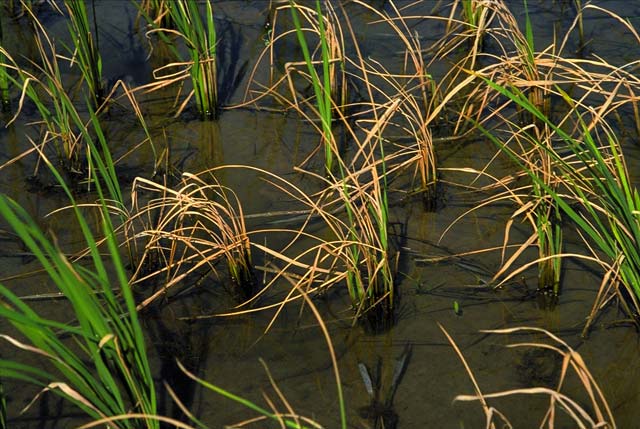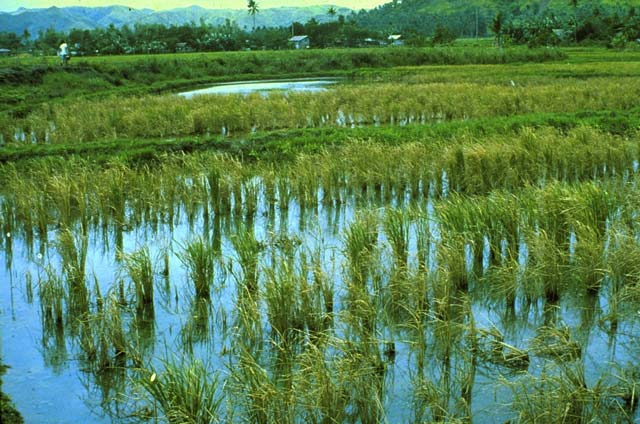Salinity
What it does
Salinity affects the respiration and photosynthesis of plants. It decreases biological N2 fixation and soil nitrogen mineralization.
Its other effects on rice growth include:
- reduced germination rate
- reduced plant height and tillering
- poor root growth
- increased spikelet sterility
It can also lead to excess Sodium (Na) uptake which decreases 1,000-grain weight and total protein content in grain (but does not alter major cooking qualities of rice).
Why and where it occurs
The major causes of salinity or sodicity include:
- poor irrigation practice or insufficient irrigation water in seasons/years with low rainfall
- high evaporation
Salinity is often associated with alkaline soils in inland areas where evaporation is greater than precipitation. - increased level of saline groundwater
- salt water intrusion in coastal areas (e.g., Mekong Delta, coastal India)
Examples of salt-affected soils are:
- saline coastal soils (widespread along coasts in many countries)
- saline acid sulfate soils (e.g., Mekong Delta, Vietnam)
- neutral to alkaline saline, saline-sodic, and sodic inland soils (e.g., India, Pakistan, Bangladesh)
- acid sandy saline soils (Korat region of northeast Thailand)
How to identify
Symptoms first manifest in the first leaf, followed by the second, and then in the growing leaf.
Check the field for the following symptoms:
- tips of affected leaves turn white
- pale, yellow, or yellow-white patches as a result of chlorosis appear on some leaves
- plant stunting and reduced tillering
- patchy field growth
Salinity or sodicity may be accompanied by Phosphorus deficiency, Zinc deficiency, Iron deficiency, or Boron toxicity.
Why is it important
Salinity can be a major problem in localized areas; it tends to occur in low coastal regions and semi-arid inland saline areas. Its damage is important throughout the growth cycle of the crop.
How to manage
To prevent the damaging effects of salinity,
- Grow salt-tolerant varieties (e.g., Pobbeli, Indonesia; IR2151, Vietnam; AC69-1, Sri Lanka; IR6, Pakistan; CSR10, India; Bicol, Philippines).
Contact your local agriculture office for an up-to-date list of available varieties. - In rice-upland crop systems, change to double-rice cropping if sufficient water is available and climate allows.
- Submerge the field for two to four weeks before planting rice. Do not use sodic irrigation water or alternate between sodic and nonsodic irrigation water sources. Leach the soil after planting under intermittent submergence to remove excess salts. Collect and store low saline rainwater for irrigation of dry-season crops (e.g., by establishing reservoirs). In coastal areas, prevent intrusion of salt water.
- Use fertilizers efficiently.
Where possible,
- In temperate climates where rice is direct seeded, coat seed with oxidants (e.g., Calcium (Ca) peroxide at 100% of seed weight) to improve germination and seedling emergence by increased Ca and Oxygen supply. Alternatively, treat rice seeds with CaCl2 to increase seed Ca2+ concentration.
- Apply rice straw to recycle Potassium. Apply farmyard manure.
There is currently no practical field management option to treat salinity.

